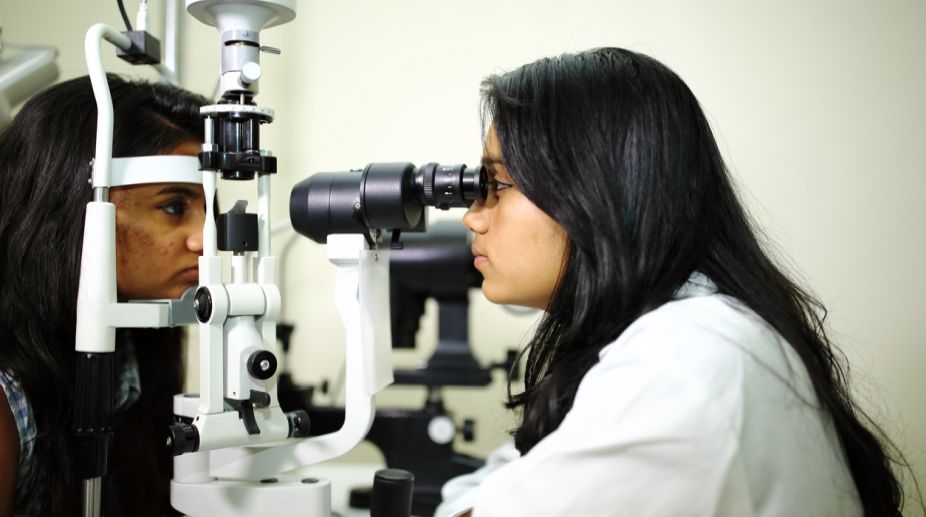Cataract is one of the main reasons for blindness and there are a lot of misconceptions about it. Unawareness can be dangerous leading to permanent loss of vision. It is imperative to educate the public about various facts related to cataract. As per World Health Organisation , today there is an estimated 180 million people worldwide who are visually disabled.
Of these, between 40 and 45 million persons are blind and approximately 50 per cent of the world’s blind suffer from cataract. In order to make a concerted worldwide effort, who and a task force of international NGOs have prepared and launched a common agenda for global action: “VISION 2020 — The Right to Sight” – A global initiative for elimination of avoidable blindness.
Advertisement
Cataract nowadays can be treated with advance technology and surgery options. Some of the misconceptions about cataract as a disease are:
Misconception 1: Cataract occurs only among aged people.
Fact: Cataracts can occur even on a year old baby. India is home to around 400 million blind children. But the important fact is that this is preventable. Lack of awareness amongst parents and society at large leads to late diagnosis and therefore poor visual outcomes in these children. The first six months after birth are crucial for development of vision and sight centre in the brain.
During this period, if a child is deprived of vision due to reasons like cataracts, glaucoma or refractive errors which goes unnoticed and untreated, the vision development can be hampered for life.
Modern lifestyles, food choices, sedentary lifestyles and lack of exercise are leading to earlier diabetes and this is the most significant factor that has caused this demographic shift.
Misconception 2:Cataract cures with time.
Fact: This is the most dangerous misconception. Once cataract has occurred, total lens will be affected. If the patient stops smoking, maintains a balanced diet or wear sunglasses to get protection from UV rays, cataract will grow slowly. But there is no chance that it will be cured on its own with time.
Misconception 3: Eye-drops, antiinflammatory drugs and vitamins restrict chances of cataract.
Fact: No drug or eye drops to prevent or restrict cataract has been invented as yet. It is a progressive disease. Surgery is the only effective treatment option for it.
Misconception 4: Fear of losing eye sight post-surgery
Fact: Only surgery can protect from losing eye sight permanently. Modern cataract surgery technology, Femto Laser-Assisted Cataract Surgery (FLACS), has automated some of the most critical steps in cataract procedures bringing new levels of safety, accuracy, predictability and has gained worldwide acceptance since its inception. The Femto-laser system enhances safety by improving a surgeon’s performance, and reducing chances of human error. The computer-controlled incisions made by the laser are more accurate than manual incisions, especially in terms of the depth and architecture.These bladeless incisions result in better wound sealing and fewer chances of infections.
Misconception 5: For best surgery results, cataract must develop fully
Fact: A cataract does not have to become “ripe” before it can be removed. With modern advances, they can now be removed from the eye at any stage of development. The longer a cataract develops, the more it hardens. At advanced stages, it can become difficult to remove. In certain situations, it is safer to remove it sooner rather than later.
Misconception 6: Cataract surgery should be done only in winter
Fact: There is no seasonal difference in the success of surgery.Waiting till the next winter will only harden and advance the cataract further, causing more vision loss and more difficulty in its removal.
Misconception 7: Cataract surgeries are all of the same kind
Fact: The operation of cataract usually ranges up to Rs.1.5 lakh. Most people believe that the pricing is different, but the surgery is the same. Pricing depends on various factors like the type of lens or the kinds of technology being used, to mention a few.
Misconception 8: Cataracts can come back
Fact: In most cases, cataract does not return post surgery. Sometimes a secondary cataract can develop due to cell growth in the artificial intra ocular lens, resulting in blurred vision. But this condition may be corrected with normal laser.
Misconception 9: The eye remains absolutely healthy after cataract surgery
Fact: The eye lens and its problems are one of the most difficult ones; therefore it cannot be assumed that the eye will remain healthy post the surgery. Retinarelated or infection-related problems can occur anytime. Therefore, regular checkup is necessary after the surgery.
(The writer is MBBS, DOMS, MS (IPGMER), Susrut Eye Foundation & Research Centre)











